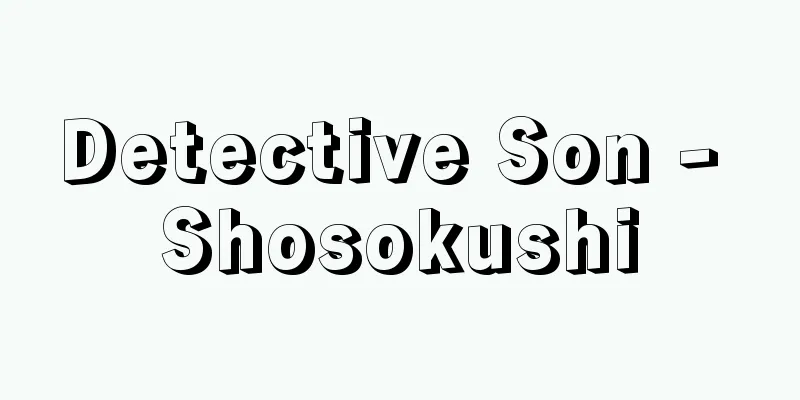Takeo Arishima - Takeo Arishima

|
Novelist. Born in Tokyo on March 4, 1878, as the eldest son of Arishima Takeshi, a Ministry of Finance official. Older brother of painter Arishima Ikuma and novelist Satomi Ton. Carrying the expectations of his parents, he was raised in a Confucian and Western-style education. He studied at Gakushuin Elementary and Middle School, and enrolled in Sapporo Agricultural College (the precursor to Hokkaido University) through a connection with Nitobe Inazo, with a dream of agricultural innovation. Influenced by his friend Morimoto Kokichi, he converted to Christianity and developed a tendency towards introspection. After graduating, he traveled to the United States in 1903 (Meiji 36) and studied at Haverford College and Harvard University. Experiencing the Russo-Japanese War, he began to have doubts about his Christian faith and began to see the potential for self-expression in literature. The first draft of his debut work, "The Kankanmushi" (later revised and published in "Shirakaba" in October 1910), which depicts dock workers, was completed during this period. He also wrote "Labyrinth" (June 1918), a work that covered the mental wanderings he experienced during his stay in America. He then toured European art with his younger brother Ikuma, went to England and met with Kropotkin, before returning to Japan in 1907. While teaching English at his alma mater (then the Agricultural College of Tohoku Imperial University), he avidly read Scandinavian literature and socialist documents. In April 1910 (Meiji 43), he participated in the founding of the magazine Shirakaba together with Mushanokoji Saneatsu and Shiga Naoya, and was respected as one of the elder members. He published serial works such as Futatsu no Michi (Futatsu no Michi) (May 1910), which expressed the idea of the dualistic opposition between spirit and flesh and its sublation, Aru Onna no Glimpse (Aru Onna no Glimpse) ... Starting with the play "Death and the Time Before and After" (May 1917), he published short stories such as "Letters of an Ordinary Person" (July 1917), "Cain's Descendants" (July 1917), "Laboratory" (September 1917), and "Kura's Recluse" (September 1917) in commercial magazines in rapid succession, attracting the attention of the humanitarian-leaning literary world and making him an instant hit. In the same year (Taisho 6), a collection of his works was published by Shinchosha as "Collected Works of Arishima Takeo", which was later transferred to Sobunkaku, and published 15 volumes during his lifetime and one after his death. The few years before and after this period were the most productive period of his creativity, when he wrote works such as "To the Little One" (January 1918), "Born Worries" (March-April 1918), and "Weeds Crushed by Stones" (April 1918), and also completed the first and second parts of his long-awaited masterpiece "A Certain Woman" (1919). He then published "Love is Stoic, but Not Regretful" (1920), which summarized his unique philosophy of life, the ideological source of his works. However, from this time onwards his creativity began to stagnate, and his long novel "Constellations" (1922), which depicted the youth of the 1890s and marked a new phase in his creative methods, was left unfinished. In 1922, he published "One Manifesto," which questioned the role of intellectuals in the face of the socialist climate of the time, and further opened up the Arishima Farm in Hokkaido with the aim of reforming himself as a capitalist. During this period, he published children's stories such as "A Bunch of Grapes" (1922), as well as short stories and one-act plays such as "Drinking Crazy" (January 1923), "Broken Bridge" (March 1923), and "Parent and Child" (May 1923) in the personal magazine "Izumi." However, his creative ability did not recover, and his nihilistic self-awareness deepened. On June 9, 1923, he committed suicide with his wife, Akiko Hatano, at their villa, Jogetsuan, in Karuizawa, ending his life. [Yamada Shunji] "The Complete Works of Arishima Takeo, Vol. 15 and Supplementary Volume 1 (1979-1988, Chikuma Shobo) " ▽ "Literature of the Shirakaba School, by Honda Shugo (1954, Kodansha)" ▽ "Arishima Takeo, by Yamada Akio (1966, Meiji Shoin)" ▽ "Arishima Takeo Theory, by Yasukawa Sadao (1967, Meiji Shoin)" ▽ "Arishima Takeo Studies, edited by Senuma Shigeki and Honda Shugo (1972, Ubun Shoin)" ▽ "Arishima Takeo Research Series, edited by the Arishima Takeo Research Group, Vols. 1-10 (1995-1996, Ubun Shoin)" [References] | | | | | | |National Diet Library Takeo Arishima Source: Shogakukan Encyclopedia Nipponica About Encyclopedia Nipponica Information | Legend |
|
小説家。明治11年3月4日、大蔵省官吏有島武の長男として東京に生まれる。画家有島生馬(いくま)、小説家里見弴(とん)の兄。両親の期待を負って、儒教的な教育と西洋風の教育のなかで育つ。学習院初・中等科に学び、農業革新の夢を抱いて、新渡戸稲造(にとべいなぞう)の縁故で札幌農学校(北海道大学の前身)に入学。友人森本厚吉の感化などからキリスト教に入信、内省的な傾向を深める。卒業後、1903年(明治36)に渡米、ハバフォード大学、ハーバード大学に留学。日露戦争に際会し、キリスト教信仰に疑いをもち、文学に自己表現の可能性をみいだすようになる。港湾労働者を描いた処女作『かんかん虫』(のちに改稿され、1910.10『白樺(しらかば)』に掲載)の初稿はこの時期に成立。またアメリカ滞在中の精神的彷徨(ほうこう)に取材した作品に『迷路』(1918.6)がある。その後、弟生馬と欧州美術を歴訪し、イギリスに渡ってクロポトキンと会見したりして1907年帰朝。母校(当時は東北帝国大学農科大学)で英語を教えるかたわら、北欧文学や社会主義の文献などを耽読(たんどく)した。 1910年(明治43)4月、武者小路実篤(むしゃのこうじさねあつ)、志賀直哉(しがなおや)らと『白樺』創刊に参加、年長同人として重んぜられる。霊肉二元対立とその止揚を目ざす思想を表明した『二つの道』(1910.5)や、『或(あ)る女のグリンプス』(1911.1~13.3)、『宣言』(1915.7~12)などを連載する。1914年(大正3)妻安子の病気療養のため上京、翌1915年農科大学を辞職。その結果作家生活に入り、1916年に妻、父を相次いで亡くしたことを転機に、主体的に創作に取り組むようになる。戯曲『死と其(その)前後』(1917.5)に始まり、短編『平凡人の手紙』(1917.7)、『カインの末裔(まつえい)』(1917.7)、『実験室』(1917.9)、『クラゝの出家』(1917.9)などを矢つぎばやに商業誌に発表し、人道主義的な傾向にあった文壇の視聴を集め、一躍流行作家となる。さらにこの年(大正6)『有島武郎著作集』として、創作集を新潮社から刊行、のちに叢文閣(そうぶんかく)に移って生前に15冊、死後1冊を数える。この前後数年が創作力のもっとも充実した時期で、『小さき者へ』(1918.1)、『生れ出づる悩み』(1918.3~4)、『石にひしがれた雑草』(1918.4)など書かれ、さらに年来の課題であった代表作『或る女』前後編を完成する(1919)。そして、作品の思想的源泉でもある、独自な生命哲学をまとめた『惜みなく愛は奪ふ』(1920)を刊行。しかし、このころより創作力不振に陥り、明治30年代の青春を描き、創作方法上に新局面をみせた長編『星座』(1922)もついに未完に終わる。1922年、当時の社会主義的な風潮に対して、知識人のあり方を問う『宣言一つ』を発表、さらに資本家としての自己改造を目的に、北海道の有島農場を解放する。この時期、『一房(ひとふさ)の葡萄(ぶどう)』(1922)などの童話や、『酒狂』(1923.1)、『断橋』(1923.3)、『親子』(1923.5)などの短編や一幕物を個人雑誌『泉』に発表したが、それでも創作力は回復せず、虚無的な自己認識を深めていった。 大正12年6月9日、軽井沢の別荘浄月庵で人妻波多野秋子と心中、その生涯を閉じる。 [山田俊治] 『『有島武郎全集』15巻・別巻1(1979~1988・筑摩書房)』▽『本多秋五著『「白樺」派の文学』(1954・講談社)』▽『山田昭夫著『有島武郎』(1966・明治書院)』▽『安川定男著『有島武郎論』(1967・明治書院)』▽『瀬沼茂樹・本多秋五編『有島武郎研究』(1972・右文書院)』▽『有島武郎研究会編『有島武郎研究叢書』第1~10集(1995~1996・右文書院)』 [参照項目] | | | | | | |国立国会図書館所蔵"> 有島武郎 出典 小学館 日本大百科全書(ニッポニカ)日本大百科全書(ニッポニカ)について 情報 | 凡例 |
>>: Arishima Ikuma - Arishima Kuma
Recommend
Delluc, L. (English notation) DellucL
...The word photogénique is a French word meaning...
Emanation
The historical name of radon Rn. In 1899-1900, E....
Heckler (Yaji/Heckler) - Heckler
It refers to words of ridicule, mockery, or critic...
Convention People's Party (CPP)
A mass political party in Ghana. Led by K. Nkrumah...
van Ouwater, A.
…Artistic activity in the north included the wood...
Infectious diarrhea - densenseigerisho
A viral infectious disease whose main symptom is ...
Simson line - Simson line
It is also called Wallace's line. When a perpe...
Weak-willed - Peacock
Weak willpower and lack of perseverance. Weak ment...
Bessho Umenosuke
A Protestant Methodist pastor and professor at Ao...
Taisha - Daisha
Ancient Chinese elevated architecture. Originally,...
Salt Bridge - Enkyo
A type of liquid junction used to connect two ele...
I'LL INC.
Official company name: "I'LL Inc." E...
unilineal descent
…There are two types of descent that can be trace...
Imadate [town] - Imadate
A former town in Imadate County, central Fukui Pre...
Uranium (plant) - Uran
… The Canarium genus consists of about 75 species...









